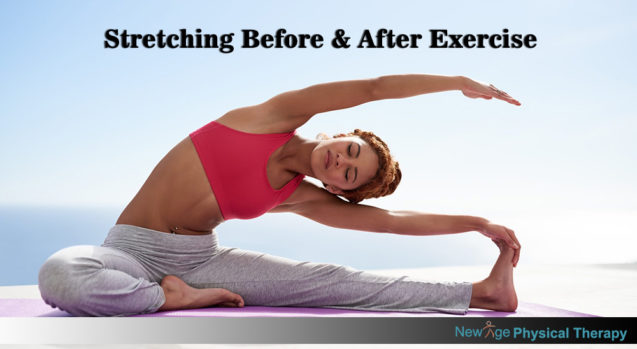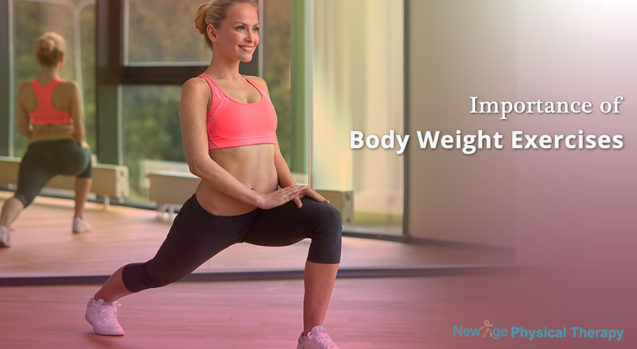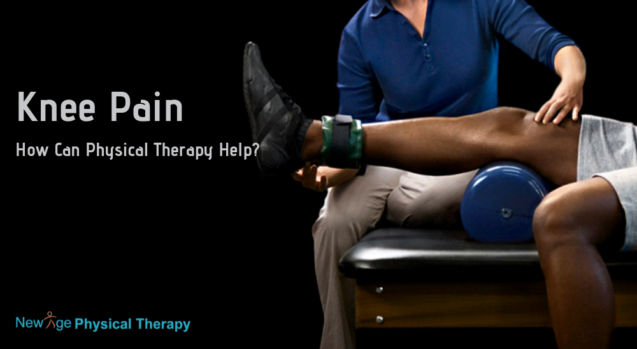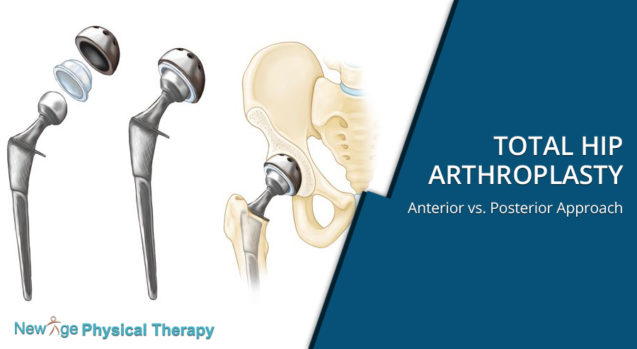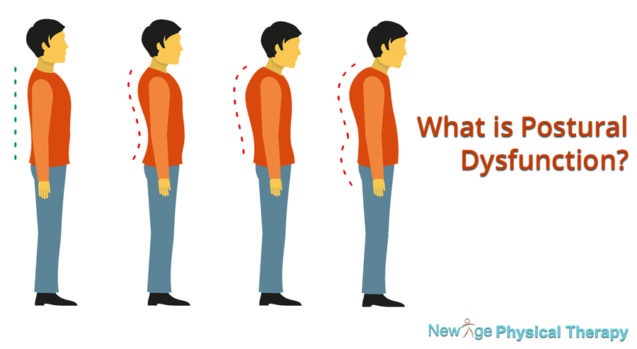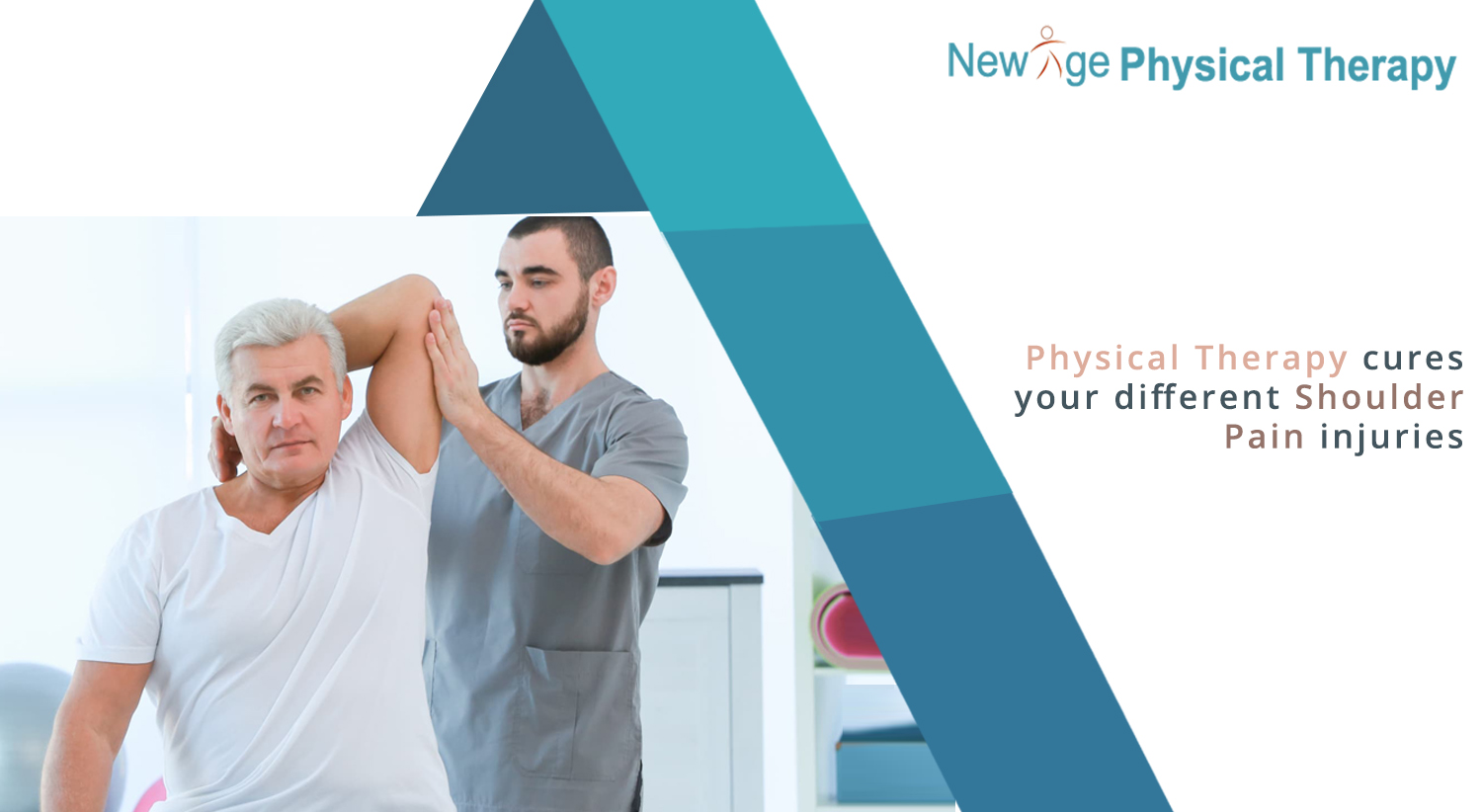
In our body most flexible and movable joint is our shoulder, it consists of several bones, muscles, joints, and tendons. This means there are many different ways from which the shoulder can become injured and cause pain. There are different causes of shoulder pain and steps in which patients can eliminate or become discomfort to do that type of particular steps. Physical therapy is the only most useful way of healing several types of shoulder pain. Book an appointment or call New Age Physical Therapy New Hyde Park NY to get treatment form experienced physical therapist which can help to heal shoulder pain.
Different symptoms which cause Shoulder Pain:
Sometimes small injuries on the back side of our shoulder can cause big shoulder pain. Other than the sometimes repetitive motion of shoulder injury can cause muscles, joints, tendons get chances to hurt that places repeatedly. Physical therapy provides several types of exercise that may reduce the pain in the patient shoulder. A physical therapist works and creates those type of program which fulfils the needs of the patient and their shoulder pain.
There are various types of shoulder pain heal option are there which reduces the pain from the patient body.
1) Torn Cartilage:
If any patient suffering from torn cartilage which can produce a number of painful symptoms. These type of injury include limited range of motion, decreased strength and clicking sensations when patient moving their arm. They may also experience the pain of torn cartilage when they moving their arm in certain positions. A physical therapist can provide this type of injury to heal with very accurate. If any patient is suffering from a torn cartilage.
2) Sprains and Strains
The initial stage of sprains and strains can cause ongoing shoulder pain that makes it difficult to perform daily activities for patients. A sprain is when a muscle system is stretched or torn. A strain involves a tendon or muscle that is stretched or torn. Sometimes the Initial stage of sprains and strains can be cured on its own of the patients. But sometimes those patients have severe shoulder pain they will need proper physical therapy and physical therapist both.
3) Frozen Shoulder
This is a worse painful condition for a patient that arises automatically and also at the initial stage it resolves by itself. But at that painful stage, a physical therapist can heal the frozen shoulder pain. In that time, frozen shoulder can produce ongoing pain and stiffness.
A physical therapist can provide various types of pain relief in shoulder pain. Physical Therapy New Hyde Park NY provides the best therapist who provides the best treatment in shoulder pain relief to their patients. A trained physical therapist can use different therapy to ease pain and increase mobility. Physical therapy provides the exercise of kneading and massaging specific joints, tendons, and muscles in the shoulder area.
Sometimes, a physical therapist can teach patient various types of exercises that they can be able to do at home and also get instant heal from that particular exercise which they provide to do. Some therapist does different techniques for shoulder pain like aqua therapy, ultrasound or electrical nerve stimulation.
Whatever type of pain you’re suffering from, a trained physical therapist can create a program to treat your particular condition. Directly Contact New Age Physical Therapy New Hyde Park NY office today to schedule a consultation with physical therapists.
More
Stretching before exercise increases flexibility and elasticity, thus, decreases the chance of injury. People should focus on stretching the muscles that will be activated during the workout. So if it is leg day, the hamstrings, quadriceps, glutes, and calves all need to be stretched. This prevents these muscle groups from tightening up during an exercise.
Not only is it essential beforehand, it is just as important if not more to stretch post-session. In fact, if a muscle group has been continually contracted throughout a workout, stretching can help muscles return to their normal length. In addition, it can decrease recovery time and alleviate soreness.
It’s important to stay committed, as studies show that flexibility from regular stretching can disappear after 4 weeks of inactivity.
The benefits of stretching include:
• Muscles release tension.
- Range of motion increases.
• Help muscles resist stress, thereby, prevent muscle and joint strains.
• Prepare the body and heart rate for strenuous exercise.
• Improved blood flow.
• Reduce the severity of painful menstruation (Dysmenorrhea).
- Body releases endorphins, making people more energetic and relaxed.
However, DO NOT stretch if:
- There is a bone fracture, acute sprain or strain.
• Range of motion is limited due to other pathology
• The joint is inflamed or infected.
• There is pain doing stretches.
Stretching determines how far a joint can bend, twist, or reach. When it is done incorrectly, it can be ineffective or dangerous as it can cause tears, instability, and damage to tendons/ligaments. It is controversial still which kind of stretching is beneficial before or after exercises.
If you are stretching before exercises definitely you need to some kind of warm up exercises before you stretch. Thus, it is important to consult a physical therapist to see which stretching exercises can be incorporated when dealing with an injury or condition.
More
No time for the gym but still want to be healthy and stay in shape? Well, bodyweight exercises can benefit you! Even without additional weight, these exercises can build strength, muscle, and fitness while helping people lose weight. The goal is to use your own body weight as resistance, by pushing, pulling, or lifting it. And if you don’t have time, don’t worry! These exercises can be done whenever and wherever.
Your physical therapist will most likely include body weight exercises into your treatment program. He/she will cater the regimen to the specific condition at hand. Such exercises include strength training to build muscle and cardio to keep the heart strong.
Based on the patient’s starting point and age, the therapist will determine the pace of each session with the quantity of exercises and how many repetitions to perform. With body weight exercises, patients can complete their full range of motion without restraint, allowing joints to move freely and decreasing the risk of injury. You’ll be able do these exercises at home with little to no cost, as equipment is not needed.
Bodyweight exercises are considered “closed chain” which is the scientific term for saying moving the body through space instead of an outside object. Closed chain exercises have been proven to increase lower body strength by 31%, whereas, open chain exercises only increases it by 13%. The reason is because moving the body through space increase the amount of muscle fibers used. Thereby, yielding more results.
If you’ve been sitting at your desk all day, it’s probably best to not go and sit down on a machine at the gym once again. Body weight physical therapy helps patients reestablish good movements. It allows movement in multiple ways that can activate muscles in the back, knees, and shoulders, thereby, keeping them healthy. This may be a better alternative to machines that can be limiting.
Examples of bodyweight exercises include planks, push-ups, squats, sit-ups, marching, and lunges. Since physical therapists are professionals in body movement, it’s best to consult one to see which exercises are appropriate for you when dealing with an injury.
More
Physical therapy is a great option to consider in relieving knee pain. The main goals of a treatment program should be decreasing pain and increasing mobility. If someone experiences difficulty standing up from or sitting down on a chair, going up or down the stairs, or walking to run errands, it’s important to treat the problem earlier on before it exacerbates.
During the initial evaluation, the physical therapist will examine the patient’s strength, range of motion, and functional abilities. From there, a personal treatment plan will be created for the individual, taking in account of any goals he/she may have in mind.
A session of physical therapy may include stretching, strengthening, balance and gait training, and joint mobilitization /stabilization. If the therapist deems appropriate, a hot pack, ice pack, electrical stimulation, ultrasound, or althetic taping may be used.
People with knee pain should consider physical therapy because it can be an effective treatment in place of surgery. Therapy has been proven to be successful for patients with meniscal tears and moderate osteoarthritis; allowing them to avoid possible risks, side effects, and expenses of surgical intervention.
If surgery is inevitable, therapy can be essential both before and after surgery for efficient recovery. Therapy beforehand, can help patients become stronger and help them accustom to an exercise routine, thus, requiring less intensive therapy post-operation. After surgery, therapy can help individuals regain mobility, increase strength and balance, walk without an assistive device, and return to previous activities of everyday life.
After an injury, exercises can help patients prevent joints from stiffening, increase movement, and reduce pain. Some beneficial exercises include stretching for the quadriceps and hamstrings, strengthening the hip and knees with clamshells, squats, and strengthening the calves with heel raises.
However, every patient start off at different levels and experience different types of pain, therefore, it is important to consult a physical therapist so they can make an exercise regimen catered to the patient alone.
More
For many years, the dominant technique for hip arthroplasty replacements has been the posterior approach. For this type of surgery, an incision is made at the back of the hip, muscles are cut to reach hip joint, the head and neck of the femur are removed, a stem with a “ball” at the end is inserted into the femur, and finally the hip joint is rejoined and surrounding tissues are repaired.
There are many risks of dislocation including sitting with hip hyper-flexed, leg internally rotated, and crossing one leg over the other. Because of this, many surgeons have taken different approaches that may be more beneficial such as the anterior approach.
In this case, a smaller incision is made in the front of the leg. Instead of cutting and possibly causing damage, muscles are separated to reach hip joint.
Post-operation will require a shorter recovery and hospital stay time compared to the posterior approach. Less precaution is needed as the patient should only avoid keeping their leg externally rotated.
There are many disadvantages to the anterior hip replacement approach as well. Because of the smaller incision, there is a restricted view of the hip joint. A special operating table is required for the anterior approach that may give rise to femoral and ankle fractures.
There may be risk of lateral femoral-cutaneous nerve damage which may lead to numbness, tingling, or burning sensation along the thigh. Finally, obese and muscular patients are not good candidates since additional soft tissue makes it difficult to access the joint.
Physical therapy can help patients with hip arthroplasty replacements regain mobility and strength. Exercise routines can increase the lifetime of an implant, thus, post-phoning another surgery.
Patients who received the anterior approach may have better range of motion, thus, there is less restriction on their exercise prescription. Studies show that they may use crutches or a walker unaided 6 days sooner than patients who received the posterior approach.
They may also experience less pain, thus, they are able to bend at hip and bear weight sooner, leading to faster recovery.
However, this is just general information. Always consult your doctor or surgeon to decide which procedure is appropriate for you.
More
Postural dysfunction, also known as “poor posture”, occurs when we position our spine in unnatural positions such as rounding our shoulders and protruding the head. This can place great stress on the vertebrae as well as the joints and muscles in the surrounding area. It’s important to correct our posture before too much pressure accumulates leading to the onset of more pain.
Essentially our body is designed for movement. It’s not meant to stay stagnant for long but today, more and more people are adapting stationary lifestyles and habits (i.e. sitting at work for long hours, watching television, or using the computer).
As technology continues to boom, more time is spent looking down at phones and tablets causing our bodies to maintain a flexed posture far longer than what’s appropriate. In fact, the ideal stance is where the ears, shoulders, hips, knees, and ankles should be aligned.
A number of factors can cause posture problems including:
- Muscle Tightness: If a muscle continues to be shortened, it will eventually accommodate that position by becoming shorter. For instance, sitting for long periods can cause our hip flexors to shorten, thus, interfering with our gait and causing a flexed forward posture.
- Muscle Weakness: If a muscle continues to be lengthened, it will eventually become weak due to overuse. For instance, sitting for long periods can cause our gluteus Maximus muscle to lengthen which increases the possibility of atrophy. This can cause lower back pain and less hip mobility, ultimately leading to poor posture when we stand.
- Soft Tissue Shortening or Adhesions: When a joint remains immobile, it can become stiff and lose some of it’s range of motion.
- Poor Neuromuscular Control: Injury can alter neuromuscular control, thus, affecting joint stability and posture.
- Inflammation: Inflammation can cause muscle spasms, guarding, and changes in posture.
How can physical therapy help?
Postural Dysfunction Physical therapy is a great method to correct poor posture and restore proper balance. A physical therapist will observe your posture and educate you on good habits to maintain. Most treatment plans concentrate on reducing compensations and strains while aiming towards the optimal load on muscles and soft tissues.
You may also receive an exercise prescription to strengthen specific muscles and to correct body alignment. It’s important to note that’s everyone’s body is designed and shaped differently; therefore, every treatment plan will be individualized to meet goals and needs.
Your treatment plan may include:
- Assessment and diagnosis of postural habits
- Postural education and training
- Electrotherapy
- Manual therapy and soft tissue massage
- Joint mobilization
- Postural taping
- Corrective exercises and movements to improve flexibility, strength, and posture
- Activity modification advice
- Advice regarding ergonomic work stations
Read more:
More
The neck bears a considerable amount of weight; as much as one-seventh of the body’s weight! It’s one of the most unrestrained body parts but pain in this area can limit our range severely. Many people try to alleviate their symptoms by taking pain killers; however, this does not stop the pain from returning. Instead, the best solution is to locate and treat the underlying problem and physical therapy is great in doing just that.
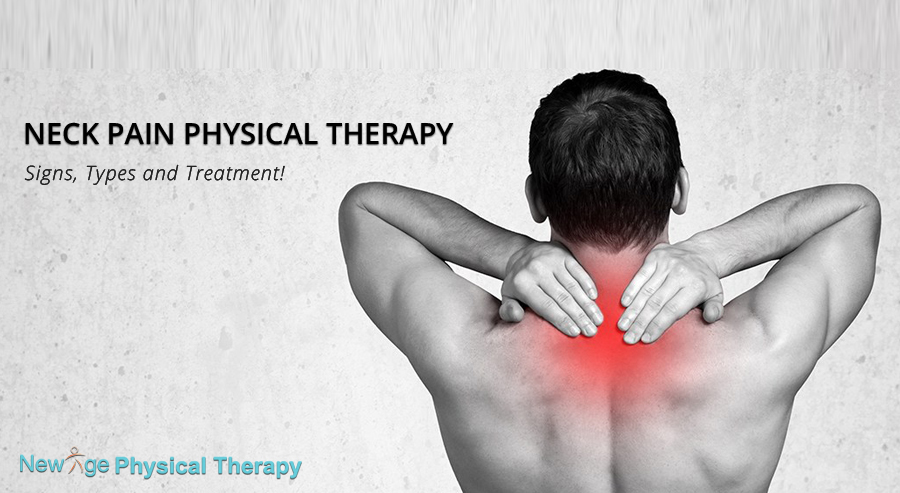
Signs and Symptoms
Neck pain can affect any age group and it ranges from a dull ache to a sharp, intense pain. In more severe cases, it can travel to the arms, shoulders, upper back, chest, and head. In fact, the most common complaint is pain occurring in the form of a headache.
Neck problems can also prevent movement because of muscle stiffness, tenderness, and tension. This can limit our participation in activities of daily living such as looking down to read a book and turning our head to look behind our shoulders.
Types of Neck Pain
The source of most neck pain is strained neck muscles. People can place stress onto the area with the most simplest of actions. Common ways that cause strains, sprains, or spasms include poor posture, looking down at your phone, carrying a heavy bag, and sleeping in an odd position.
Falling or whiplash is another way to cause the problem. For instance, in a car accident, your neck may go backward and then forward, in a whip like motion, a movement likely to harm the area. Other impact or force-related trauma can cause similar injuries.
If muscle knots, tension, or stiffness is left untreated, it can lead to chronic neck pain that lasts for three or more months. It’s capable of spreading to the following areas: shoulders, chest, upper back, and/or arms causing weakness, tingling, and/or numbness to develop.
Thus, it’s important to address neck pain in its early stages before it exacerbates and limit our mobility even more. Apart from physical, additional symptoms of chronic pain include fatigue, depression, and anxiety.
Treatment
Physical therapy treatment for neck pain may include:
- Applying ice, heat, and/or electrical stimulation
- Muscle energy technique
- Joint mobilization and soft tissue massage
- Cervical traction (light stretching of the neck)
- Postural corrections as well as ergonomics consultation
- Strength and stretching exercises
- Neural mobilization
Neck Stretches: It’s optimal to include stretching exercises in the treatment plan to increase range of motion and flexibility of the cervical joints. It can also relieve the stiffness that accompanies the pain.
Neck Strengthening: Strengthening exercises can improve posture, which in turn decreases recurrent flare-ups of pain.
Aerobic Conditioning: Aerobic exercises can benefit blood flow to the neck and upper back muscles and soft tissues, thus, loosening the muscles and increasing range of motion. Also, after 30 minutes of cardio, our body naturally produces endorphins, a “painkiller” that can help relieve symptoms.
Read more:
More
Is a lower back pain interfering with your life? You are not alone! Nearly four out of five people experience back pain at some point in their lifetime. Lower Back Pain takes various forms, from a persistent dull ache to sudden sharp pain, and has many causes.
Sometimes it results from a sprain, fracture, or other accidental injury. It can stem from a disease or medical condition, such as herniated disc, arthritis, fibromyalgia, or spinal stenosis (a narrowing of the spinal canal through which the spinal cord runs). However, many people develop back pain because they’re overweight or sedentary.
Most lower back pain usually gets better within a few days or weeks, and surgery is rarely necessary. However, even small episodes of back pain are the result of weakness in the core muscles and usually lead to longer, more painful episodes in the future if you don’t take care of the underlying problem.
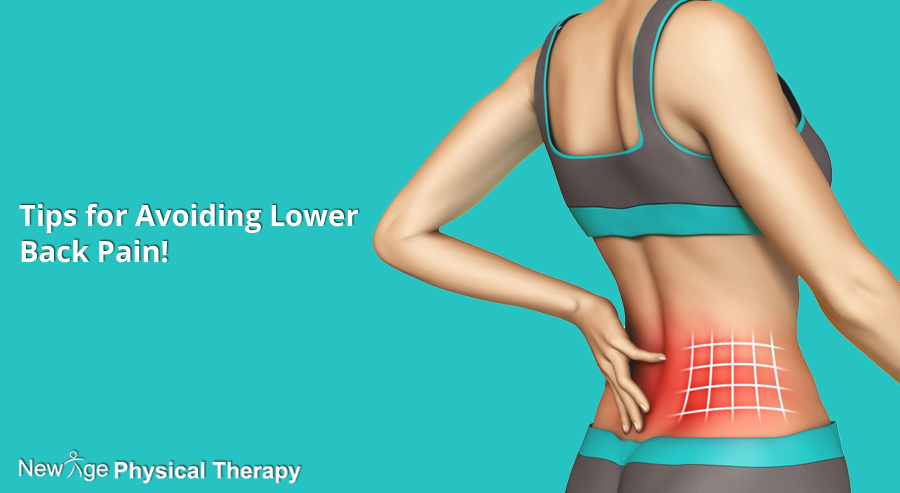
Here are a few tips that are surprisingly effective at preventing back pain and keeping it from returning:
- Get more exercise. If your back is hurting, you may think the best way to get relief is to limit exercise and to rest. Studies show that frequent changes in position and regular physical activity can help ease inflammation and muscle tension faster in the back.
- Maintain a healthy weight. Extra pounds, especially in your midsection, can make back pain worse by shifting your center of gravity and putting strain on your lower back. Staying within 10 pounds of your ideal weight may help control back pain as well as all the other health benefits.
- Quit smoking. Nicotine in smoke, restricts the flow of nutrient-containing blood to spinal discs, so smokers are especially vulnerable to back pain.
- Sleeping position. If you’re prone to back pain, talk with our physical therapists about the best sleeping position. What is most important is to be in a comfortable position that you can sleep in to achieve the most rest. Sleeping on your side with your knees pulled up slightly toward your chest with a pillow between the knees is best during the first 15-30 minutes in bed. Prefer to sleep on your back? Put one pillow under your knees and another under your lower back. Try to avoid sleeping on your front.
- Improve your posture. Find a good chair to sit on. Avoid soft couches or chairs that put you in a slouched position. Find a chair that will allow you to keep your feet flat on the floor when you sit. With standing, try to alternate your positions and walk around if possible. Have one foot forward when standing and switch this every 10 minutes.
- Watch how you lift. Don’t bend over from the waist to lift heavy objects. Bend your knees and squat, pulling in your stomach muscles and holding the object close to your body as you stand up. Don’t twist your body while lifting. If you can, push rather than pull heavy objects.
- Use supportive shoes. A good pair of shoes, with cushion can reduce pressure on your back. Avoid using high heels as they shift your center of gravity and strain your lower back.
- Keep your wallet in your front pocket. Don’t put your wallet in the back pocket of your pants. Sitting on a wallet shifts your balance when sitting causing discomfort and back pain.
- Avoid heavy bags. If you use a briefcase or handbag, make sure you have only what you need to lighten the load. Use a bag that can strap over the opposite shoulder, so the weight is more evenly distributed. When carrying a heavy bag or case without straps, switch hands frequently to avoid putting all the stress on one side of the body.
There is a lot that you can do to prevent back pain and alleviate quickly when it starts. The important part is to work with your physical therapist to address the underlying cause of your back pain. This puts you on the right path to a healthy back that will support you pain free for a lifetime.
To learn more about our back and neck program, helping you attain a strong, healthy back, contact us today!
Read more:
More
Our body is meant to move. Many of our daily activity include sitting for long hours it may be driving, at desk, watching TV, using public transportation to and from work. When we sit for long period of time it slows down our circulatory, lymphatic and digestive system. It also alters our posture which contributes to neck, back pain, headache and other pains.
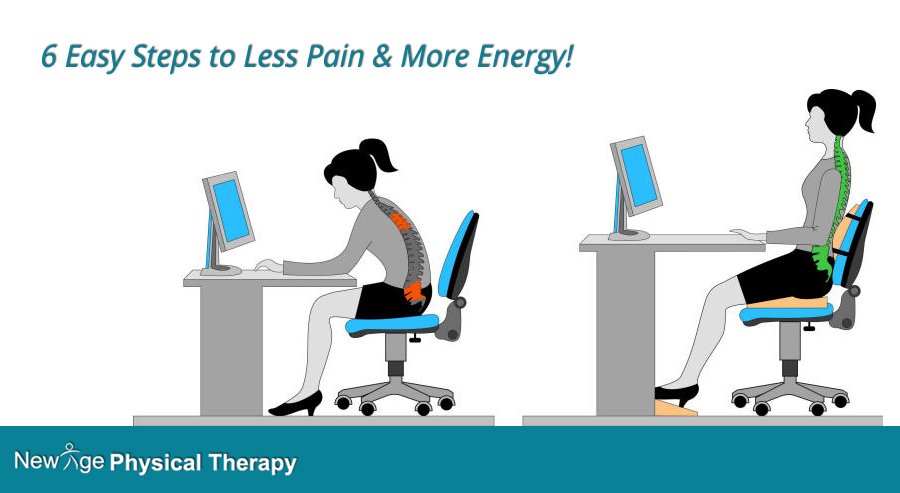
Following some simple steps can reduce those effects on our body.
Get Into the Mindset
You have to get in to a new routine which can make you more mobile. Get up during TV commercial, take break from your desk and chair and walk around for few minutes. Start slowly with what you can do and stick with it. Small improvement will lead to big success in long term.
Drink More Water
It might sound very unreal but water helps us increase energy and relieve fatigue. It also helps flushing out toxins, boost immune system. It can also prevent muscle cramps and sprains. So keep that water bottle handy with you and keep drinking throughout the day. Keeping yourself hydrated has many benefits.
Yoga and stretches
Yoga doesn’t improve your flexibility but it improves your strength, stability and over all well-being. You don’t have to join yoga classes there are many basic tutorials are available on internet which you can do at home. If you cannot do yoga start with simple stretching exercises for commonly tight muscles. This may help you to reduce your pain and will prevent future injuries.
Posture and ergonomics
Lot of pain and ache comes from poor posture, improper body alignment and poor ergonomics. Poor setup of desk, chair and computer can increase tension in your muscles when this happens consistantly you will develop tightness in muscles which may lead to pain and ache. So it is very important to have a good posture a maintain it. Also ergonomically improvement around your work area can help you prevent aches and pain.
Exercises
Do any form of exercise atleast 20 min a day. We all need some form of aerobic exercises to prevent many problems. So take out some time to do exercises. If you are not a gym person you can just do walking or biking.
Doing regular exercises keeps muscle strong and that prevents them to get hurt easily. Keep in touch with expert for physical therapy of postural dysfunction injuries and get better solution there.
More
Tennis elbow is one of the most common overuse elbow injury. Patient doesn’t have to play tennis to have this condition. Many patients when we are discussing their condition they say they never played tennis in their life. You don’t have to play tennis to have tennis elbow. Medical term for tennis elbow physical therapy is lateral epicodylitis.
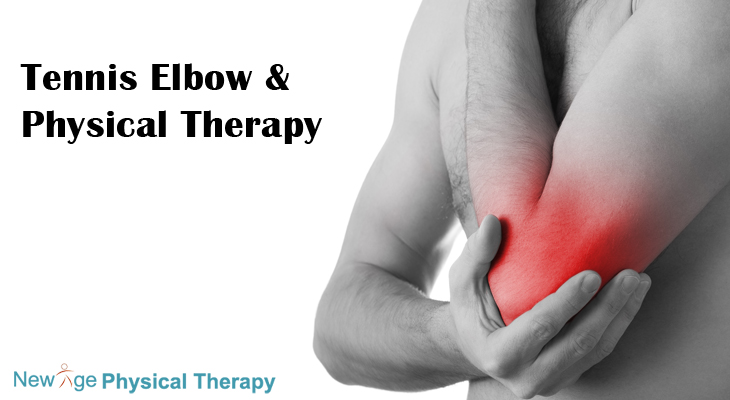
What Causes Tennis Elbow?
Tennis elbow is an overuse injury. It is caused by repetitivemovements which put stress on tendons which are situated outside of the elbow and helps us move hand backward. This is an injury of common extensor origin tendons which controls wrist extension.
It is very common in tennis players, but in reality it can impact anyone who performs repetitive movements;people who work manual labor jobs like construction, carpenters, Plummer, Painters and machine operator etc.
Symptoms
Listed are few symptoms which is common in tennis elbow patients
- Pain in the outer elbow, especially when gripping something, lifting, shaking hand, getting up from chair, opening a jar.
- Tenderness or swelling outer side of elbow.
- Weakness in wrist extensor and/or painful wrist extension.
Physical Therapy for Tennis Elbow
Every patient is different, depend upon condition treatment may vary. In acute cases in other words in recent injury most likely to use cold packs;some therapist may use cold packs even in chronic condition because it’s an inflammatory condition.
Physical therapist may use electrical stimulation, ultrasound, soft tissue massage and specific exercises.
Doctor may try pain medication (anti-inflammatory, analgesic, oral cortisone) or give injection.
If you have tried cold pack, hot packs and other home remedies at home which have failed you can contact your physician or physical therapist.
New Age Physical Therapy provides you with personalized, one-on-one care you deserve in a friendly atmosphere. Our therapists have more than 15 years’ experience and are up to date with current techniques and treatments.
All of our patients receive individual attention with the same provider during each and every visit. Our goal is to restore each patient to his or her highest possible level of function.
Read More…
More


